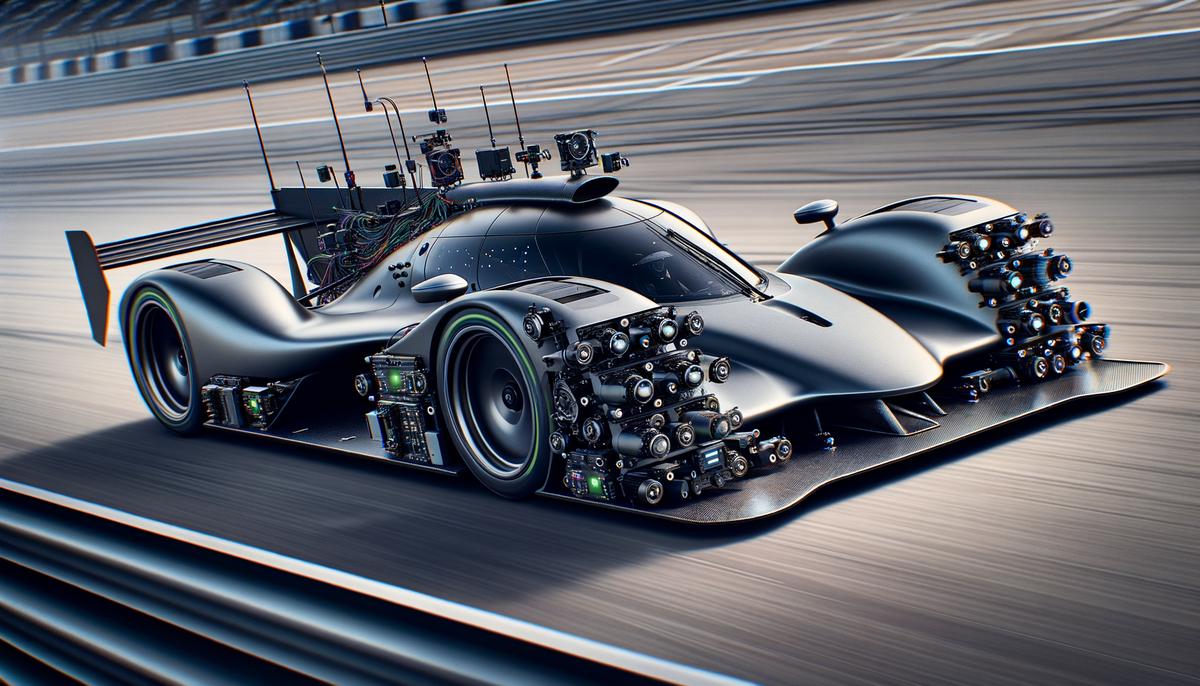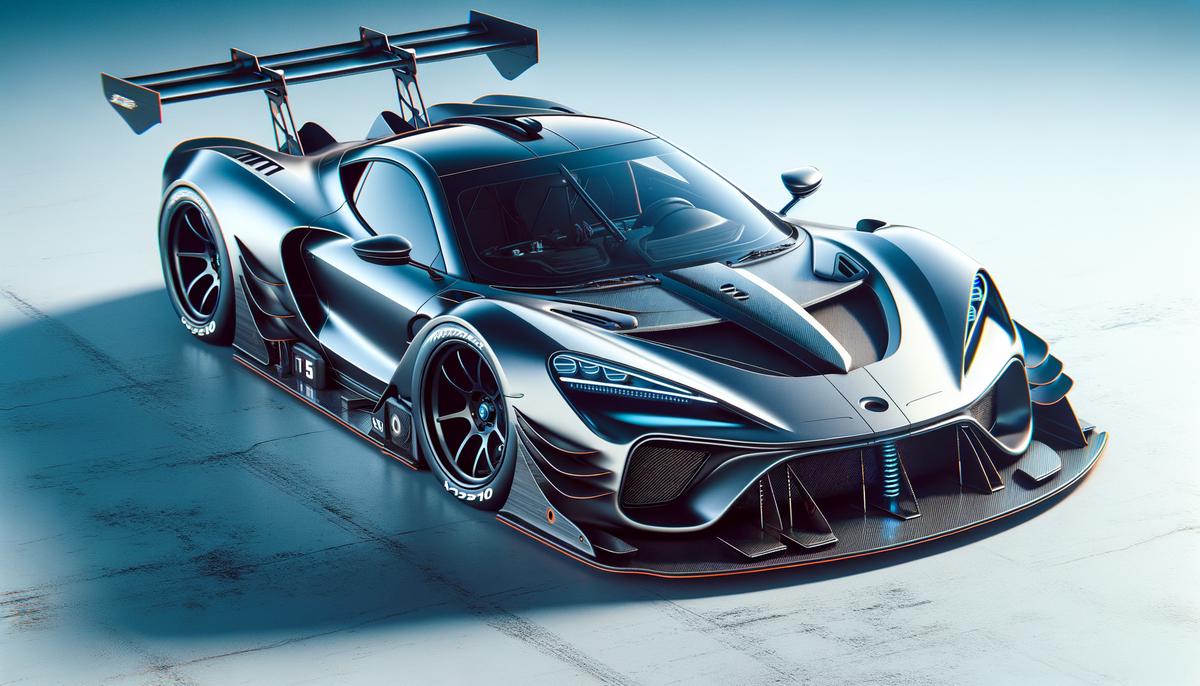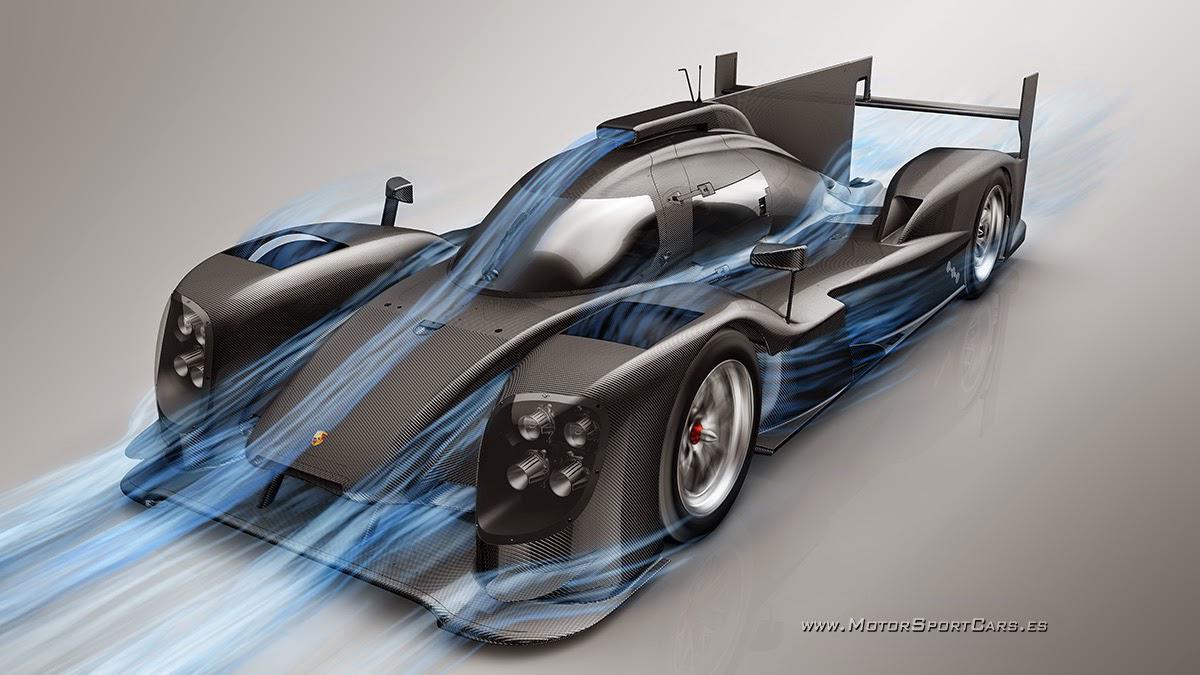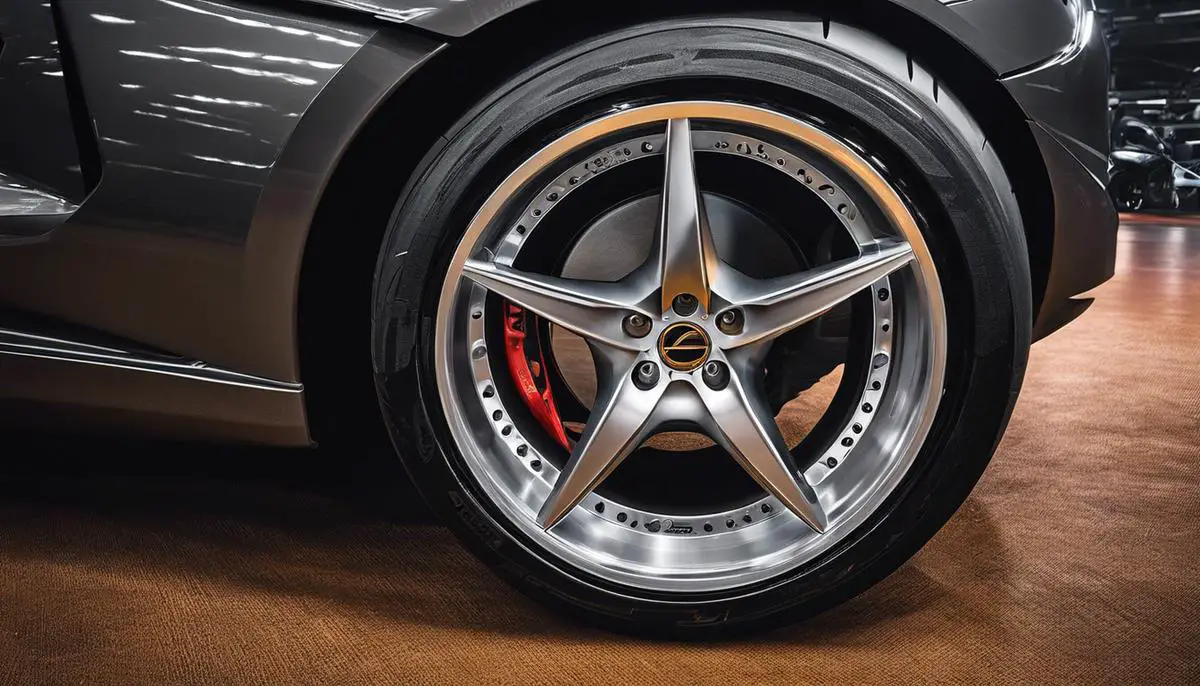The interplay between air and moving vehicles is a subject that might seem reserved for engineers and designers. Yet, it holds significance for anyone who's ever taken a drive. The principles of aerodynamics not only influence the performance and efficiency of cars but also shape our experiences on the road in ways we might not immediately recognize.
Contents
Aerodynamic Basics
Aerodynamic Basics
When a car moves down the road, it interacts with the air around it. Aerodynamics is the study of how gases interact with moving objects, and in the world of automobiles, it's about controlling how air moves around a vehicle.
When driving, you may have noticed the air pushing against your hand if you stick it out the window. This force is called drag, and it's what cars are up against at high speeds. Drag is like an invisible force holding the car back, making the engine work harder and consume more fuel. The goal of aerodynamic design is to minimize drag, allowing the car to slice through the air with less effort.
Lift is another important concept in aerodynamics. While lift is desirable for airplanes, it's not ideal for cars. Lift is a force that wants to lift the car off the ground, which can reduce contact with the road and affect stability. Aerodynamic designs aim to minimize lift to keep the car firmly on the pavement.
On the other hand, downforce is the opposite of lift and is desirable for cars. It presses the car down onto the road, providing better grip and stability, especially at higher speeds or when cornering. Some cars use spoilers or other aerodynamic features to increase downforce.
Designing for aerodynamics involves playing with shapes and testing in wind tunnels to see how air moves over, under, and around a vehicle. The smoother and more unobstructed the airflow, the less drag the car experiences. This might involve tweaking the body shape, adding curves, or incorporating features like air dams, which guide air smoothly underneath the car, diffusers, and spoilers.
The teardrop shape is known for its aerodynamic efficiency. While most cars today aren't exactly teardrop-shaped, many borrow elements from it to improve their aerodynamics.
Better aerodynamics result in a smoother ride, quicker acceleration, and improved fuel efficiency. Whether it's a family sedan or a high-performance sports car, how it interacts with air makes a significant difference in performance and efficiency.
In essence, aerodynamics in cars is about optimizing the vehicle's interaction with air, minimizing resistance and maximizing stability and efficiency. The goal is to find a balance where the vehicle can perform at its best without having to fight against the air.

Wind Tunnel Limitations
Wind tunnels, despite their important role in the design process, have limitations and challenges when it comes to aerodynamic design. The controlled environment of a wind tunnel can't perfectly replicate the conditions a car faces on the open road.
In the real world, air flow is more complex than in a wind tunnel. Natural air flow includes turbulence, gusts, and directional shifts due to environmental factors that wind tunnels struggle to replicate. The steady stream of air in a wind tunnel provides an idealized environment that doesn't fully account for the variability of crosswinds, varying altitudes, and changes in air temperature and density. A car that performs well in a wind tunnel might face challenges in real-world conditions.
The road itself also influences aerodynamic behavior. Cars interact with the ground, affecting air flow under the car, which can be difficult to perfectly simulate in a wind tunnel. Additionally, the air disturbances caused by other vehicles on a busy highway add complexity that is not easily replicated in lab conditions.
Wind tunnel testing often uses scale models, which can introduce the "scale effect." Results from models don't always scale up accurately to full-size vehicles due to differences in Reynolds numbers, which relate to the ratios of inertial forces to viscous forces within the fluid flow.
While wind tunnels are crucial, they are not entirely sufficient. Aerodynamicists complement wind tunnel findings with computational fluid dynamics (CFD) simulations and real-world testing using sensor-equipped vehicles. These additional steps help designers gather a more complete picture of a vehicle's aerodynamic performance.
Engineers continuously learn and adapt, making adjustments based on wind tunnel findings and real-world observations. By acknowledging the limitations of wind tunnels and employing a multifaceted approach to testing, designers can create cars that perform well not only in a controlled setting but also in the unpredictable conditions of the real world.
Beyond the Tunnel
Beyond wind tunnels, automobile designers and engineers employ various methods to perfect the aerodynamics of vehicles. Computational Fluid Dynamics (CFD), on-track testing, and the use of scale models and simulations are all part of the process.
Computational Fluid Dynamics (CFD) acts as a digital wind tunnel, allowing engineers to simulate and observe aerodynamic phenomena in a virtual environment. CFD enables designers to test and refine vehicle designs quickly, adjusting variables and shapes in pursuit of optimal aerodynamics.
On-track testing provides a real-world evaluation of a vehicle's aerodynamic performance. Cars equipped with sensors, cameras, and other measurement devices are tested on tracks, facing real wind, turbulence, and conditions. This data complements wind tunnel and CFD findings and can sometimes challenge preconceived notions, leading to further design refinements.
Scale models and simulations are also used to predict a car's aerodynamic behavior before building a full-scale prototype. These models, when subjected to controlled tests, provide valuable insights into airflow patterns, potential drag points, and areas for optimization.
Each method—CFD, on-track testing, and the use of scale models or simulations—complements the others, forming a comprehensive approach to modern aerodynamic analysis. Together, they provide a holistic view of a vehicle's performance against air resistance.
The goal of this multifaceted approach is to ensure that when a car hits the road, it does so with optimal aerodynamics, efficiency, and performance. It reflects the ongoing effort to understand and optimize the interaction between vehicles and the air around them.
As this process continues to evolve, it leads to innovative designs and technologies that push the boundaries of aerodynamic performance, resulting in vehicles that are more efficient, stable, and enjoyable to drive.

Aero Devices’ Impact
Aerodynamic devices on cars serve specific purposes in managing airflow around the vehicle. Spoilers, wings, diffusers, and air dams all play a role in reducing drag, enhancing downforce, and directing air to beneficial areas while minimizing turbulence.
- Spoilers are designed to reduce lift and drag by altering the airflow over the car. Positioned at the rear, they help keep the car stable and planted on the road at high speeds.
- Wings, unlike their aviation counterparts, are designed to increase downforce rather than lift. They use their shape to direct air pressure downward, enhancing tire grip and stability, especially during high-speed cornering.
- Diffusers are located underneath the rear of the car. As air flows under the car and reaches the diffuser, it enters a narrowing space. The diffuser then gradually expands, slowing down the air and reducing its pressure. This reduction in pressure, combined with the acceleration of underbody airflow, contributes to increased downforce.
- Air dams, positioned at the front of the car, regulate the amount of air flowing under the vehicle. By redirecting excessive airflow to the sides, they help reduce lift. Air dams also ensure that cooling air reaches the radiators and brakes efficiently.
Each of these devices plays a specific role in managing airflow around the vehicle, working together to reduce drag, increase downforce, and improve overall performance. However, the effectiveness of these devices depends on proper design and integration with the vehicle's overall aerodynamics.
Optimal use of aerodynamic devices involves careful consideration of their placement, shape, and interaction with the vehicle's body. When properly implemented, they contribute to improved vehicle stability, handling, and efficiency.

Practical Aerodynamics
In the realm of everyday commuting and grocery-getting motor vehicles, aerodynamics plays a pragmatic role, often less visible but fundamental to a vehicle's harmony with the air it displaces. Manufacturers incorporate aerodynamic principles into consumer vehicles to improve fuel efficiency, achieve a stabler ride, and enhance performance.
Fuel efficiency is a key concern, as it impacts both finances and environmental stewardship. Car makers meticulously mould the vehicle's body, refining curves and edges to ensure the air flows over, around, and beneath the chassis with minimal resistance. Each model undergoes extensive aerodynamic evaluations to identify and eliminate drag points.
Stability also benefits from aerodynamic designs. Features like subtle trunk lips acting as spoilers, underbody covers, and finely adjusted side mirrors manage airflow to reduce lift and sideward buffeting, providing a comfortable driving experience.
Performance is another area where even family vehicles benefit from aerodynamic optimizations. Incorporation of air dams and diffusers translates to better acceleration and braking performance. An aerodynamically optimized vehicle demands less from its engine, enabling a responsive and satisfying driving experience.
Moreover, features like grill shutters, sculpted side panels, and thoughtfully designed wheel rims contribute to efficient airflow. Each adjustment works together to enable vehicles to move through the air with grace, reduce wind noise, and maximize fuel efficiency.
Aerodynamic principles bring vehicles to life, imbuing them with qualities that transform drives into enjoyable experiences, conserve resources, and ensure safe journeys. Through the practical application of shaping air's interactions with vehicles, aerodynamics enables a synergetic relationship between form and function.

Future of Aerodynamics
As we look to the future, advancements in materials, design techniques, and the rise of electric vehicles offer new opportunities for aerodynamic innovation in the automotive industry.
Innovations in materials could redefine automotive design. Adaptive surfaces that control airflow dynamically for minimum drag or maximal downforce as needed are on the horizon. These smart materials and nano-technologies could enable cars to alter their aerodynamic profile based on speed, weather, or driver preferences.
Design techniques, powered by AI algorithms, could shape the next generation of vehicles. By analyzing vast amounts of aerodynamic data, these algorithms could optimize designs for both efficiency and aesthetics, pushing the boundaries of what is possible.
The electric vehicle revolution presents a blank slate for aerodynamic experimentation. With flat floors afforded by battery packs and fewer cooling requirements, EVs allow for vehicles to be designed as single coherent aerodynamic sculptures. The pursuit of increased range could lead to everyday cars adopting more efficient shapes and active aerodynamic elements.
Integrated systems that manage airflow around, through, and inside the vehicle using principles borrowed from aviation could further enhance performance and efficiency. Paired with vehicle-to-vehicle communication technologies, convoys of cars could draft each other on highways, reducing drag collectively through coordinated aerodynamic efficiency.
The future of aerodynamics in the automotive world promises a fusion of art, science, and technology. As electric motors replace combustion engines, the focus shifts even more towards mastering the air around us. With innovation leading the way, vehicles of tomorrow could encapsulate efficiency and performance in forms that push the boundaries of automotive design.

The journey through aerodynamics reveals its critical role in automotive design and performance. The ongoing quest to harmonize vehicles with the air around them promises advancements in speed, efficiency, and driving experience. As these principles are refined, we move closer to a future where cars and air move together seamlessly.



